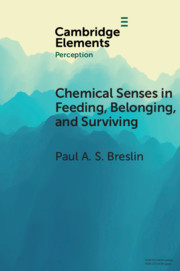Element contents
Chemical Senses in Feeding, Belonging, and Surviving
Published online by Cambridge University Press: 05 July 2019
Summary
- Type
- Element
- Information
- Series: Elements in PerceptionOnline ISBN: 9781108644372Publisher: Cambridge University PressPrint publication: 11 July 2019
References
- 14
- Cited by



